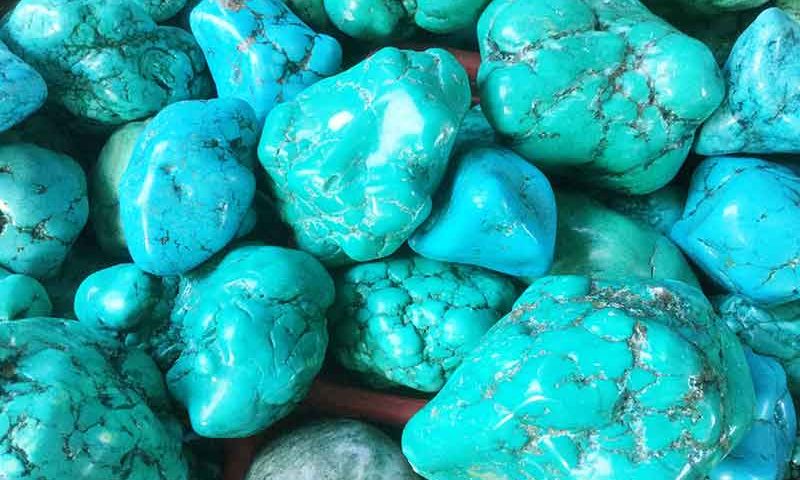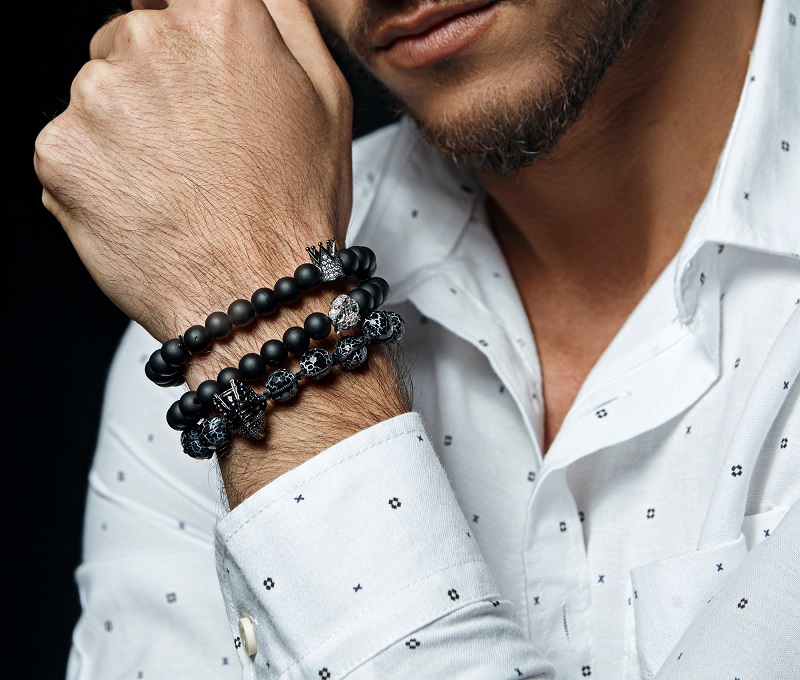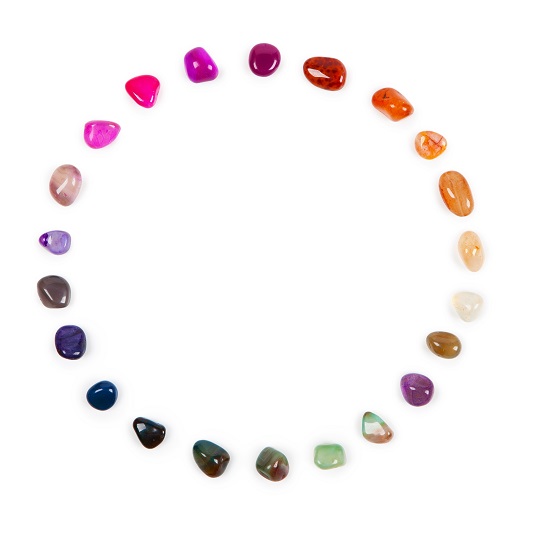Gemstone of the Week: Turquoise

Gemstone of the Week: Agate
7th July 2017
French Jewellers: Our All-time Favourites
13th July 2017Steeped in history, myth and even magic, turquoise is a blue-green gemstone that has been prized by different cultures for thousands of years, as far back as the Egyptians. The gemstone remains popular today, with thousands of tonnes of the stone mined every year for use in women’s jewellery. It is often set into rings or cut into beads and used for both bracelets and necklaces, alongside gold and silver.
There has also been a variety of books published about turquoise, covering its history and its place in culture, including the notable Sky Blue Stone: The Turquoise Trade in World History (2014) by Arash Khazeni. In the book, Khazeni notes that “the blue of turquoise, according to the Javahirnama, made it celestial earth, an amulet of victory, and a natural curative substance and medicine for the eyes.” Turquoise is a “strengthening stone” and, throughout history, has been revered as a talisman for kings, shamans, and warriors. In his book, Khazeni describes how New Mexico became the “land of turquoise” after the discovery of mineral veins in the Burro Mountains and, notably, the Azure Mine.
The ancient Egyptians mined turquoise on the Sinai Peninsula over 7,000 years ago and ever since it has continued to grow in popularity for use in not only jewellery but also as a decorative ornament, for art, and a gemstone used for spiritual healing. It is one of the most popular stones in the world.
How to Identify Turquoise
Turquoise is a very distinct stone thanks to its striking blue-green colour, which is often broken up with patches of yellow or brown depending on the quality of the stone. In its raw form, turquoise can be tricky to identify as, at a glance, it appears to be a patchy brown, yellow and grey rock. However, if you look very closely, you will notice vibrant patches of blue or green seeping through the surface.
It is when purchasing polished turquoise gemstones that the real identity crisis begins. According to research, more than 90% of turquoise on the market is dyed howlite. Howlite is a very absorbent, veiny white stone that can be dyed easily to replicate turquoise, as well as to create vibrantly coloured turquoise look-alikes, which is why you need to be extremely careful when shopping for turquoise. Firstly, look at the appearance of the stone to check that the colour is not too consistent. Turquoise varies in colour more than other popular gems. Typically, even in jewellery, real turquoise will appear to be a mix of blue, green, light and dark grey, and even yellow tones. Turquoise is non-uniform. It is also a tough stone, which means it shouldn’t scratch easily and the colour shouldn’t come away.
Lastly, as with most types of minerals, if your turquoise is very cheap, it is most likely faux turquoise. Typically, real turquoise costs around $7 to $10 per carat, however, prices vary based on the quality.
Different Colours and Types of Turquoise
While vibrant blue stones with a consistent colour are the preferred and most desirable type of turquoise, they are scarce and, therefore, command a very high price. Often, the most favoured shade of blue is called robin’s egg blue or sky blue. However, after blue, the most desirable colour is a blue-green shade, while stones with brown and yellow accents are of less regard. It is the iron deposits, rather than aluminium, that cause turquoise to be a darker colour with yellow and brown patches.
Turquoise with heavy matrix (or veins) is, typically, less desirable for both manufacturers and consumers, which is why many manufacturers try to cut turquoise, so the veins are not present in the finished stone. However, some enjoy seeing the matrix, which is often present as grey or black veins.
As well as being categorised by how desirable the colour is, turquoise and American-mined turquoise, in particular, is given a name determined by its unique features. For instance, Ajax Turquoise, mined from the Ajax Mine in Nevada, is light blue with dark blue veins and often features blotches of emerald green and brown. Similarly, Black Window Turquoise, also mined in northeastern Nevada, is more of a light green or mint colour and features spider web-like veins that are dark grey or black in colour.
Turquoise varies from mine-to-mine. There are hundreds of types of turquoise around the world.
Where is Turquoise Found?
You can find turquoise in areas with dry climates all over the world, including the United States, Mexico, Iran, Chile, China, and Tibet. The look of the stone often varies from mine-to-mine, which makes consistency in turquoise a rarity. Some of the most famous turquoise mines are in New Mexico, including the Little Chalchihuitl mine in Los Cerrillos. The turquoise found at Little Chalchihuitl is known for its light green-blue colour and often has a grey or brown matrix. Secondly, Nevada is a hotspot for turquoise mining, with numerous well-known spots including the Ajax Mine and Royston Turquoise Mine, both of which have turquoise ranging from light blue to emerald green with distinct brown spots. Other hotspots include Hubei in China, which is the primary source of the country’s turquoise.
Healing Properties of Turquoise
Amongst other things, it’s turquoise’s healing properties that make it so popular all over the world, both now and thousands of years ago. Turquoise is a “strengthening stone” and is thought to be a good all-around healer. The gem helps to reduce symptoms of exhaustion and depression and boosts the immune system to keep you fighting fit. It is also an anti-inflammatory, which is one of many reasons it became an essential for ancient wounded warriors. Emotionally, turquoise helps to balance your mood and encourages peace and calmness, as well as self-forgiveness and self-acceptance.
In Summary
As well as being an incredibly beautiful gemstone, turquoise is extremely powerful both physically and mentally. When shopping for turquoise, including turquoise jewellery, always make sure you’re getting the real thing. Add turquoise to your life to boost your confidence and increase happiness.




